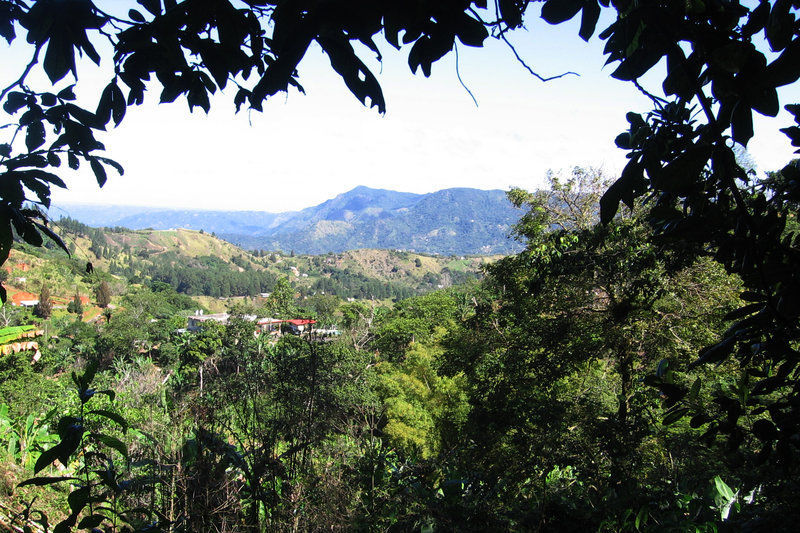The traditional coffee producing area has made a comeback and changed the way of fine coffee.
The story takes place in Puerto Rico.
Puerto Rico used to be a major coffee producing area more than a century ago, but coffee production here has been declining for nearly half a century, and now it is only about 10 million pounds a year, a drop in the bucket compared with the past. the acreage of coffee fell from nearly 200000 acres in the 1960s to about 40,000 acres in 2010. At the same time, there are even fewer coffee exports. The shrinking of farms and the loss of labour have made this traditional coffee producer seem completely unable to compete with big countries such as Brazil and Colombia.
But now, a new force of coffee has sprung up on the island, and taking the route of boutique coffee may be a bright way for this small Caribbean island. Puerto Rico's coffee producing areas are mostly concentrated in the mountains of the island, with lush vegetation, which is suitable for the growth of coffee trees. In the past, Puerto Rico's agricultural sector also encouraged farmers to cut down shade trees and let coffee trees face the sun to increase yield, but this did not have an advantage on the quality of coffee beans themselves.
As a plant that needs shade, coffee beans are now more surrounded by organic producers with heavy vegetation. For example, Finca Gripi ñ as Farm, which is more than 600m above sea level, has only five acres of planting area where other crops are cultivated besides coffee, and there are small coffee farms surrounded by banana trees, orange trees and more mountain vegetation, waterfalls and streams. The owners have also planted extra hardwood trees with shorter growth periods. Provide more natural shelter for coffee.

These tiny small farms form a new group of coffee revival in Puerto Rico, where coffee production increased for the first time last year. The agricultural sector on the island promotes the development of the industry through subsidies for equipment and manpower.
In Utuado, the heart of the coffee producing area, the University of Puerto Rico also offers courses for farmers to teach them how to optimize production, and soil experts guide people in the fields to cultivate quality coffee to increase product value and increase income.
In the university laboratory, they have also set up a coffee tasting room to give growers a better understanding of their products. Alfredo Rodriguez, who teaches cup testing and tasting courses, is both a coffee tasting expert certified by the American Fine Coffee Federation and a grower himself.
His students now have many former engineers, doctors and even pilots, who have switched to their hometown agriculture in middle age. These producers equipped with industry knowledge will better grasp the market demand and provide more accurate and high-quality products.
Source: curiosity Daily
Important Notice :
前街咖啡 FrontStreet Coffee has moved to new addredd:
FrontStreet Coffee Address: 315,Donghua East Road,GuangZhou
Tel:020 38364473
- Prev

Are women who drink coffee more beautiful?
It is often said that regular consumption of caffeine is not good for your health, but is this really the case? In recent years, with the continuous progress of research, coffee has been proved to be one of the best drinks for health. Caffeine is a substance that relieves drowsiness, but it does more than that. According to research, it also promotes brain activity. Drinking coffee can promote brain memory.
- Next

Recycling of coffee grounds using Kaffeeform to regenerate coffee cups and plates
What is the function of the coffee grounds left over from making coffee every day, apart from throwing away or recycling for deodorization, deworming, deworming, and fertilizing? At the Amsterdam Coffee Festival (Amsterdam Coffee Festival) held in Amsterdam, the "Kaffeeform" coffee cup launched by German designer Julian Lechner is made by coffee grounds of the same brand.
Related
- The milk tea cup becomes smaller?! Overlord Tea Girl launches a new "Return to Yunnan" series
- Accused of selling counterfeit and high-priced coffee beans! Well-known boutique coffee brand "Oukelao" bowed and apologized!
- How to make espresso dumplings? Can I eat coffee and glutinous rice balls together?
- Save the unformed and stagnant powder cakes in one second! What is the problem with stagnant water in the powder bowl of the espresso machine?
- What does hand-brewed coffee stop mean? Why is it not recommended to make coffee by hand?
- Is it normal to smell like coffee? Why does coffee smell like alcohol? What's wrong with the strong smell of cold extract ice dripping ice brewed coffee?
- How to solve the problem that hand-brewed coffee extraction takes too long? Why is the water flowing so slowly when making coffee?
- The main points of making Australian white coffee, the proportion details, how does Australian white properly foam and blend the flowers?
- Can ice water make cold extract coffee? What is the difference between room temperature water and ice water for making cold coffee?
- What milk is best for making latte and white Dirty coffee? What is the difference between different brands of fresh milk and pure milk for making coffee?

